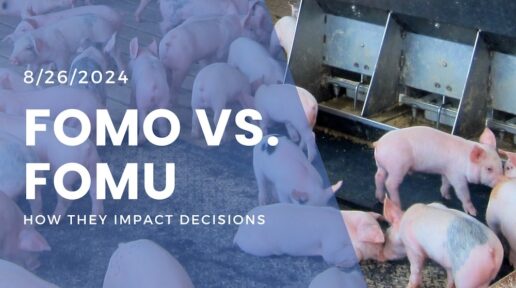Sustainability: it’s a buzzword that, unless you’ve been under a rock the size of a hog barn, you’ve certainly heard.
But in the pork production world, what does that buzzword actually look like day-to-day? And what tools are available to help producers achieve sustainability goals? What even are the sustainability goals, and how do they help your operation?
Since 2007, the “We Care Ethical Principles” have helped define sustainability in pork production. These guidelines take a holistic approach to industry-wide sustainability, according to a report from the National Pork Board and the National Pork Producers Council. They encompass animal health, the environment, workers, food safety, the local community, and public health.
Sustainability efforts in pork production can look like changes to production practices, better data around emissions, more training for employees, better supply chain traceability, and more.
Sustainability in pork production can even extend beyond just the hog barn. When swine manure is used in fields, for example, it can limit phosphorus loss (by up to 46%) in a post-application runoff event.
At the end of the day, more sustainability and efficiency within pork production helps create a healthier environment, of course. But these improvements also lead to healthier animals, more efficiency, and better profitability for producers.
And as more innovations continue to hit the market, producers can increasingly lean on technology to help them meet sustainability goals.
How technology impacts — and improves — pork industry sustainability
Decades ago, there weren’t many tools to help manage or optimize sustainability efforts. But these days? There is no shortage of technological advancements that can help producers meet the national councils’ goals.
Digital tools can now help monitor electricity or water usage, optimize feed usage, collect data, and more.
The Iowa Pork Industry Center has a digital sustainability calculator, where producers can input info about their manure management system, feed efficiency/type, and more — and the calculator will give them output numbers (how much carbon dioxide is released according to weight and/or barn cycle).
The goal is to help producers better understand how their production practices impact the environment. With more data and digital tools, those decisions become even easier.
In the barn, some producers have even been using robotics to clean facilities and limit emissions.
But one of the most exciting frontiers for sustainability in the pork production world?
Smart monitoring tools.
How a smart alarm system can help producers reach sustainability goals
For producers who want more visibility over their facilities — and all the ways in which they can optimize their operations — a smart alarm system can be a life-saver.
Sure, reliable alarms can prevent out-of-feed events, minimize health and safety risks, bring down your propane bill, and more.
But they can also help you reduce waste, improve efficiency, help the environment, and become a more sustainable operation. That’s a lot of wins.
With Distynct sensors, producers can monitor 24-hour water consumption, plus get historical data on water usage trends, so you can optimize usage.
Barn sensors (connected to a smart alarm system that alerts you remotely) can also give you visibility over feed bin levels: full, almost empty, empty, or bridged. Access to real-time alerts helps you avoid hungry hogs. And big-picture data about usage can improve feed efficiency at your barn. (Have you historically bought too much feed — that ends up going to waste — in the month of October, for example?)
With feed costs making up between 60 and 70% of all production costs, that optimization can be critical. Limiting waste doesn’t just make your operation more sustainable in terms of animal or environmental health: it makes it more profitable.
Those boosts to efficiency aren’t just happening with feed, though. Energy efficiency is something a reliable smart alarm system can help empower, too.
With sensors that can monitor electrical use, you can prevent overheating, regulate energy spend and usage, and avoid wasted energy use.
And, of course, an alarm system helps prevent emergencies, like an overheated barn or empty feed bins. This leads to healthier hogs, lower mortality rates, and a more sustainable industry that can quickly mitigate disaster — and even stop disasters from happening in the first place.
More sustainable operations benefit the farm and the world
The concept of sustainability often gets tied into environmental regulations — and that is part of it. Production practices that limit emissions and waste are part of the larger fabric of sustainability that the National Pork Board and NPCC have outlined.
But it’s also more than that: improving on-the-ground efficiency at hog barns, limiting health and safety issues for animals, creating an industry that is well-equipped for the future, and even improving bottom lines, so producers can continue doing what they do best.
Sustainability doesn’t just have to be a buzzword or a vague concept you’re not sure how to align with. When you have technology that enables sustainability, it can be just a natural part of your operations — and a huge benefit to your farm.


